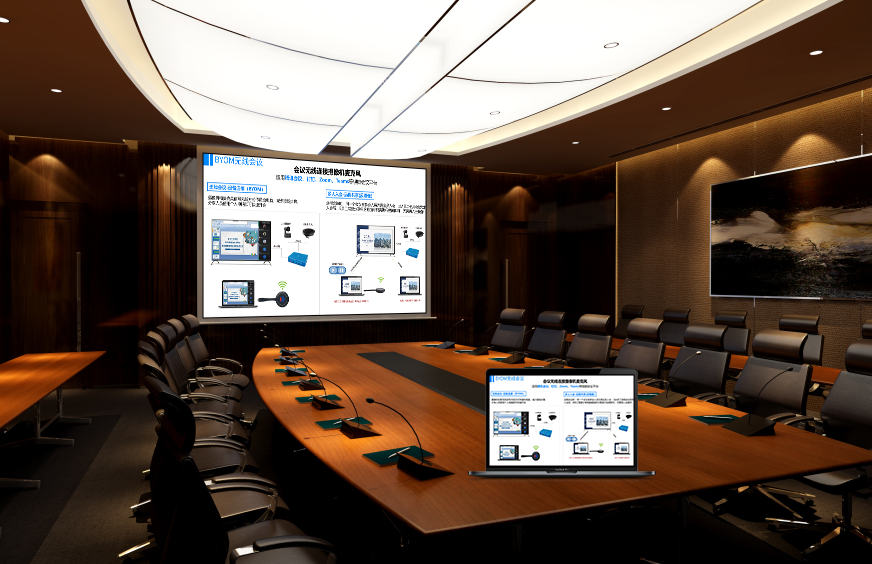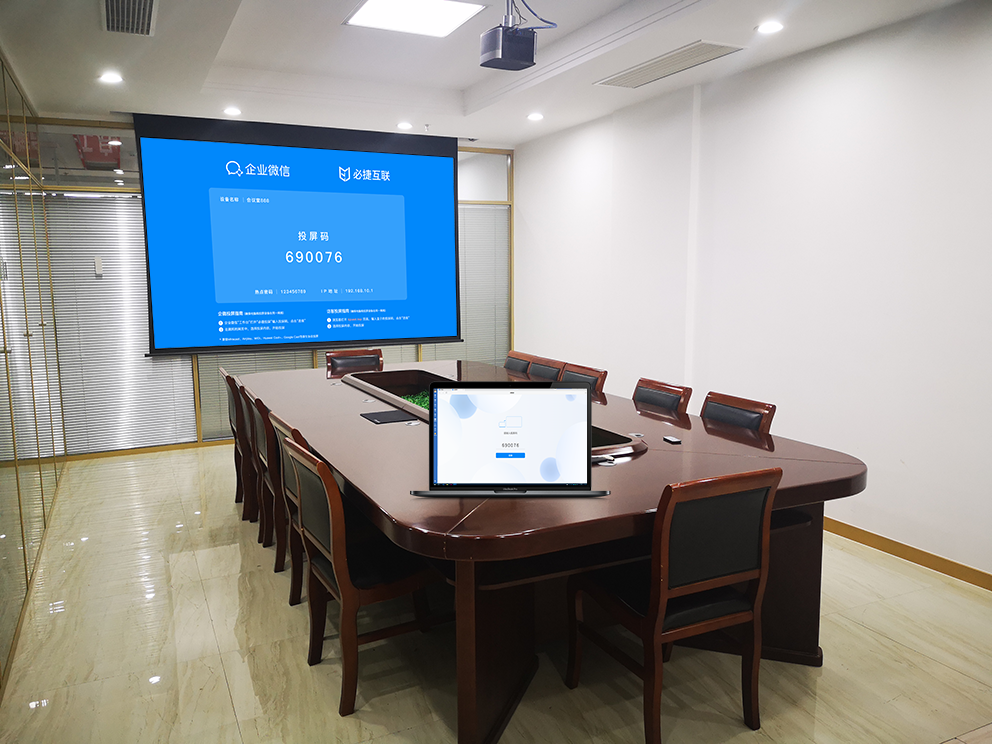Miracast: Making Wireless Device Connections Simpler
Among wireless screen mirroring technologies, Miracast is a top choice for cross-device content transfer because it doesn’t need a network and offers efficient direct connections. It breaks down the connection barriers between Android devices and large screens, allowing content from phones, tablets, and computers to be quickly cast to TVs, projectors, and other displays without relying on Wi-Fi. This provides a stable and reliable wireless solution for office, entertainment, and educational settings.
I. Direct Connection Without a Network: Breaking Free from Environmental Constraints
Miracast uses point-to-point wireless transmission, which means devices can connect directly without needing public Wi-Fi or a mobile network. After you turn the feature on, the sending device (like a phone or tablet) automatically searches for Miracast-enabled receivers (like a TV or screen mirroring dongle). Select the target device, and pairing is complete in 10 seconds, without needing a password or QR code.
This feature is especially useful in outdoor venues without network coverage. At an exhibition, a staff member can use an Android phone to connect directly to a projector via Miracast to show a product video in real-time. During an outdoor class, a teacher can mirror content from their tablet directly to a portable screen so students can see it clearly. Even in a meeting room with an unstable network signal, Miracast provides a stable transmission, preventing interruptions caused by network fluctuations and ensuring presentations go smoothly.
II. Broad Device Compatibility Covering Multiple Brands
As a universal industry standard, Miracast is supported by most Android devices and smart displays, including phones, tablets, computers, TVs, and projectors. Android phones from brands like Huawei, Xiaomi, and OPPO, Windows computers from brands like Lenovo and Dell, and smart TVs from major brands can all achieve wireless screen mirroring via Miracast.
Whether it’s photos and videos from a phone, handwritten notes from a tablet, or a PPT document from a computer, all content can be cast to a large screen in its original form, without worrying about format compatibility. In cross-brand collaboration scenarios, client files from an Android phone can be mirrored to a conference display of a different brand, and a design proposal from a Windows computer can be synced to a projector with an Android system. Device differences are no longer a barrier to content sharing.
III. High-Definition and Stable Transmission for Quality Content Presentation
(I) HD Quality and a Smooth Experience
Miracast supports 1080P Full HD mirroring, with some devices even capable of 4K Ultra HD output. Image details are clear, and colors are true to life. When playing an HD movie, characters’ expressions and the scene’s textures are incredibly lifelike on the big screen. When displaying complex charts, every piece of data and every line is clearly presented, making it easy for viewers to get the information accurately.
Transmission latency is low, and audio-visual synchronization is good, ensuring a smooth experience when watching videos or playing games. When mirroring a mobile game, there’s virtually no delay between your commands and the on-screen action, making the gaming experience comparable to playing directly on the phone. When watching a live sports event, the mirrored picture is in sync with the action, capturing the excitement of a goal at the moment it happens.
(II) Strong Anti-Interference Capabilities
Using advanced wireless transmission technology, Miracast maintains a stable connection even in environments where multiple devices are operating simultaneously. At home, while a phone is mirroring a show via Miracast, other devices can use the network as usual, and the big screen remains smooth and without lag. In an office, multiple devices can take turns mirroring via Miracast, and the switching process is seamless, without screen interruptions or distortion.
IV. Scenario-Based Applications to Unleash Wireless Value
(I) Office Scenarios: A Great Helper for Efficient Meetings
In small meetings, attendees can quickly mirror content like proposals and data from their Android phones or Windows computers via Miracast, saving time on connecting cables and making the meeting pace more focused. During discussions, people can directly annotate key points and make changes on the big screen, with feedback being sent in real-time to the mirrored device, which improves collaboration efficiency. For impromptu meetings, you don’t need to debug the network beforehand; devices can connect directly to begin mirroring, greatly shortening meeting prep time.
(II) Home Entertainment: Enjoying Big-Screen Fun
On weekends, you can use an Android phone to mirror a movie or TV show to the TV via Miracast. The family can gather to watch together and enjoy the immersive experience of the big screen. Kids can mirror cartoons from a tablet, as watching on a large screen is better for their eyesight. At a friend’s gathering, people can take turns mirroring photos and videos from their phones to share fun stories and strengthen their bonds. You can also mirror games for multi-player interaction on the big screen, which makes entertainment more engaging.
(III) Educational Scenarios: A New Way to Have Interactive Classes
Teachers can use an Android tablet to mirror their lesson materials to the large classroom screen via Miracast, making it easier for students to see and stay focused. In class, students can mirror their homework or problem-solving steps via Miracast to share with the teacher and classmates, which makes the classroom atmosphere more lively. In an outdoor field class, a teacher’s phone can connect directly to a portable projector to show materials filmed on-site, making the lesson more relevant to real-world scenarios.
Miracast, with its no-network requirement, broad compatibility, and high-definition stability, provides a convenient solution for wireless device connections. It makes content transfer between Android devices and large screens simple and efficient, playing an important role in office, home, and educational settings. It brings many conveniences to people’s lives and work and promotes the popularization and development of wireless screen mirroring technology.